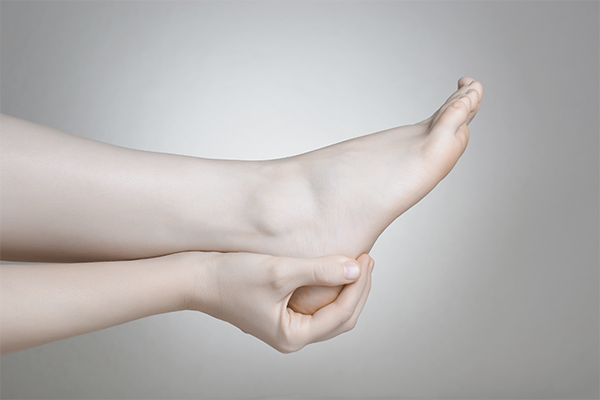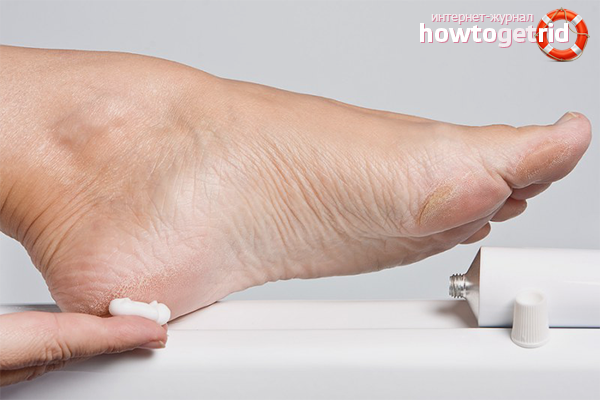The content of the article
Many people believe that the pain in the arms and legs is nothing that you should not even pay attention to. In fact, pathological processes in the limbs can have the most unforeseen consequences, up to and including complete disability. Heel pain contributes to the disruption of normal walking biomechanics. This not only makes it difficult to do familiar things, but can also cause changes in other joints of the legs. Why do heel pains arise and how to deal with them?
What contributes to the development of this symptom
Heel pain can occur if the pathological process is localized in the joints, bones, ligaments, fascia, tendons or nerves. This is facilitated by various diseases or simply non-compliance with the rules of walking and wearing shoes.Pain can occur due to the following factors:
- Walking on the socks. There are people who, from childhood, have become accustomed to focusing on the area of the metatarsophalangeal joints, while the heels do not touch the surface, but remain in the air. Over time, this leads to atrophy of the tendons and softening of the calcaneus, which is accompanied by pain in the heel and calf muscles.
- Injury. Often the anatomical formations of the heel region are affected due to a fall or jump with a landing on the entire surface of the foot. Because of this, even heel bone fractures are possible.
- Inconvenient shoes. In order to ensure the health of your feet, you must choose shoes with good shock absorption, you can not save on this purchase. Cheap shoes often do not have arch supports, which increases the load on the heels. Even in women's shoes, heel height is not so important as the ability to absorb the foot.
- Unusually long walk. It is good for health to walk or run a lot, but only if the loads increase gradually. Walking for several kilometers for a person who is not used to walking on foot can cause pain in the legs.
- Obesity. Excess weight is a load on all organs and systems, but the musculoskeletal system suffers most of all. Footwork in this case is equivalent to how a normal weight person would always carry a barbell with him. The feet are not intended for movement under such load conditions.
What diseases can lead to heel pain
All diseases in this area can be divided into several categories: diseases of the joints, inflammation and neuropathy.
Joint diseases
- Rheumatoid arthritis. It is an autoimmune disease that initially affects the small joints of the arms and legs, and then other anatomical areas. At the same time, the skin over the lesion is red and hot, the joint grows in size, in the morning there is stiffness, which disappears in a few hours.
- Gout. At first, the first metatarsophalangeal joint of the foot is almost always affected. In this case, all the symptoms develop suddenly: unbearable pain, redness, inability to carry out the movement. The heel joints are affected after one or more recurrences of the disease.
- Reactive arthritis. They occur after an infectious disease. In this case, the primary focus of inflammation can be localized in any part of the body. Heel joint pain can occur after chlamydia, gonorrhea, dysentery, salmonellosis and many other infectious diseases.
Inflammations
- Plantar fasciitis. Inflammation of the plantar fascia may occur with inadequate loads on the foot. It manifests itself in the form of pain in the heel, aggravated during walking. It is this disease that leads to the so-called "heel spur." At the same time in the fascia deposited salts, which look like a solid solid formation, squeezing the surrounding tissue.
- Bursitis. This is an inflammation of the articular bag. The symptoms are similar to rheumatoid arthritis, but the disease is not autoimmune.
- Osteomyelitis. This is the melting of the calcaneus as a result of purulent inflammation. In the calcaneal region, it may occur due to open wounds, injuries, and also due to the spread of infection from other foci of inflammation. Accompanied by fever and a significant deterioration in the general condition.
- Neuropathy
The heel area is innervated by the branches of the tibial nerve.When it inflammation develops pain in the heel, as well as the inability to bend the foot. This pathological process arises due to the infringement or injury of a nerve, as well as inflammation of its membranes.
What if this symptom develops
Depending on the cause of the pain, this pathological condition can be treated by a traumatologist, rheumatologist, infectiologist or therapist. The complex of studies will include radiography or ultrasound of the heel area and a number of laboratory tests, possibly need a puncture of the joint.
Autoimmune diseases are treated with glucocorticosteroids and cytostatics, gout with uricosuric drugs. When osteomyelitis produce surgery with drainage of the abscess, antibiotics are prescribed. Inflammatory diseases are treated with nonsteroidal drugs. In case of injury, plaster cast may be applied. It should be borne in mind that fractures of the calcaneus grow together very slowly.
There are a number of therapeutic and preventive measures that can reduce heel pain. These include:
Acceptance of nonsteroidal anti-inflammatory drugs and analgesics.The most commonly prescribed diclofenac, voltaren, ibuprofen and aspirin. However, before using it is necessary to consult a doctor.
Changes in physical activity. The load on the foot should be moderate, excessive load can cause pain, insufficient - atrophy of tissues.
- Use of orthopedic insoles;
- Weight normalization;
- Refusing to wear heel shoes until the symptom disappears.
Express method for eliminating pain: putting an ice cube on the heel area. Well helps with the inflammatory genesis of the disease.
It should be borne in mind that these methods are designed to reduce pain, but not cure the cause of its occurrence.
It can be concluded that heel pain is a common symptom that can occur due to various pathological processes. For its treatment, it is necessary to consult a doctor and undergo a series of diagnostic measures. There are ways to reduce pain, but they do not eliminate the cause that caused it.
Video: why does heel pain appear and is it always a heel spur












To send